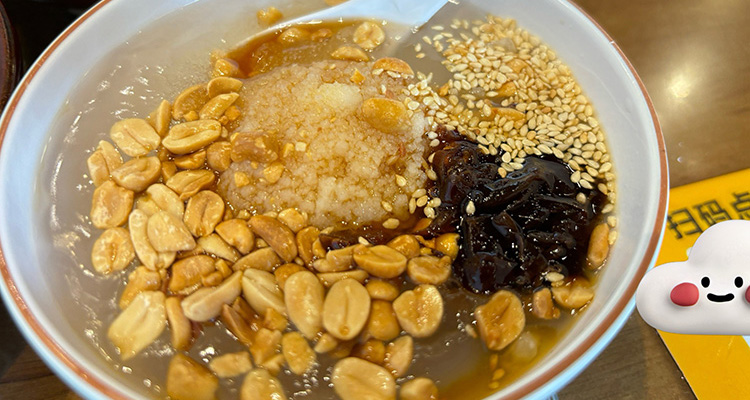Guiyang Rice Cake Porridge – Traditional Guizhou Dessert You Must Try
When a rustic ceramic bowl is filled with thick rice porridge and small rice cake cubes peek through the surface, the aroma of rose sugar and roasted nuts fills the air — this is Guiyang Rice Cake Porridge, a traditional sweet treat that warms both heart and soul. As the spoon stirs gently, the smooth rice paste blends perfectly with the toppings, delivering a silky and comforting flavor that instantly brings you back to the slow-paced streets of old Guiyang.
1. Origin and History
This dessert has been enjoyed in Guiyang for over a century. It originated during the late Qing Dynasty as a tea snack served in local teahouses. The inventive people of Guiyang combined sticky rice cakes with creamy rice porridge, creating a dessert that’s both filling and sweet. Whether eaten for breakfast or as an afternoon treat, it’s a soft and gentle representation of Guizhou’s culinary culture.
2. Cultural Significance
For the locals, this dish is a nostalgic comfort food, especially during the chilly winters of central Guizhou. A bowl of warm rice cake porridge in the morning was enough to chase away the damp cold. More than just food, it symbolizes Guiyang people’s tender way of life and serves as a taste of home for those far away.

3. Ingredients and Features
The porridge is made with a blend of local Guizhou glutinous rice and japonica rice, ground into fine rice flour. The rice cakes are steamed glutinous rice cubes, soft and chewy. The essence of the dish lies in its homemade rose sugar syrup, topped with crushed peanuts, sesame seeds, and walnuts. A sprinkle of candied winter melon and colorful candied peels adds the perfect finishing touch.
4. Cooking Process
Mix the rice flour with cold water to form a smooth paste. Gradually pour it into boiling water while stirring continuously until it thickens into a smooth porridge. Add the steamed rice cake cubes to a bowl, pour the hot rice porridge over them, and finish with rose sugar and nut toppings. The key lies in temperature control — the porridge should be thick and lump-free.

5. Flavor and Texture
The rice porridge is silky and mild, while the rice cake cubes are chewy and soft. The rose sugar delivers a delicate floral sweetness, followed by the nutty crunch of peanuts and walnuts. Every spoonful offers a perfect balance of fragrance and sweetness — sweet but not heavy, warm and comforting.
6. How to Eat
The most authentic way to enjoy it is to mix everything well and eat it slowly, one spoonful at a time. Locals often pair it with a small savory snack, such as fried spring rolls or scallion pancakes, to balance the sweetness — a true reflection of Guiyang’s dining wisdom.

7. Where to Try It
You can find the best versions in Guiyang’s old dessert shops (about ¥8–15 per person) or at small stalls near Dan’s Crispy Duck (around ¥6–12 per person). Visit during breakfast or afternoon tea hours, and try saying: “A bowl of Rice Cake Porridge, less sugar please.”
8. Travel Tips
The English name for 糕粑稀饭 is “Guiyang Rice Cake Porridge.” Be careful when eating — it’s served hot. Stir it well before tasting. If you prefer a chilled version, ask the vendor to let it cool first for a refreshing twist.

9. Easy Homemade Version
At home, you can recreate this dish using store-bought rice flour. Slowly cook it into porridge over low heat, using rice cake cubes or mochi pieces instead of the traditional rice cakes. Replace rose syrup with honey for convenience. Even without the original recipe’s secret sauce, a perfectly thick porridge will still bring that cozy Guiyang sweetness to your kitchen.
Come to the ancient alleys of Guiyang and seek out this warm, fragrant bowl of rice cake porridge. When the aroma of rose sugar lingers in the air and the soft rice cakes melt on your tongue, you’ll understand why this simple dessert has been passed down for generations. In today’s fast-paced world, slow down and savor this comforting sweetness made with patience and care.


